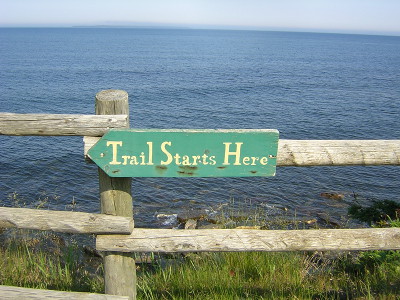It’s easy to answer “Where do I start?” with “at the beginning” isn’t it? Sometimes though, the beginning isn’t immediately obvious.
“I’m soooo overwhelmed with what has to be done! And I have no idea where to even start making changes so that I feel like I’m accomplishing something on a regular basis.”
Sound familiar?
I’ve heard it a few times, heck – I’ve said it myself a few times!
I pulled this great quote from David Allen’s book Getting Things Done:
Trying to manage from the top down, when the bottom is out of control, may be the least effective approach.
This describes exactly why I believe you need to know what’s currently on your plate before you set your long term goals.
Now, you might be saying, but Evie! You’re a coach, don’t you encourage your clients to set goals right away?
And yes, I do, but the shorter term goal of “I want to understand what’s currently on my plate” needs to be accomplished before adding more goals to the plate.
So, why take the time and energy to know what’s on your plate before you set your goals? Well, there are three reasons:
- When you don’t already know exactly what is on your plate, taking on more things only adds to the confusion and overwhelm. ‘Should’ becomes a constant companion as in, “Oh, I should be doing this” and you spend less and less time with what makes you excited, as in “Ohhh! I get to do this today!”
- When you know what’s on your plate, you can easily see where you’ve taken too much on or what’s not as important as you previously though. And then you can let that stuff go. Remember, just because you’ve always done it that way, or other people in your profession have, doesn’t mean that you have to do it that way.
- When you set your goals after you know what’s on your plate, you can easily see what you’re already doing that supports those goals. And you might find that with a slight tweak, some things you’re already doing will support your new goals.
Think of it like this, if you’re driving and get lost, you stop and find out where you are (or pull out your phone or GPS) so you can determine how and when you’ll get to your destination.
So, what’s on your plate that you can let go of? Share in the comments below!






 Whenever I talk about task lists, whether in a presentation or with clients, I hear about how they’ve tried making lists, but it just doesn’t work for them. And if they had a system for keeping track of their goals and tasks that was working for them, then I’d leave it alone. However, they usually don’t.
Whenever I talk about task lists, whether in a presentation or with clients, I hear about how they’ve tried making lists, but it just doesn’t work for them. And if they had a system for keeping track of their goals and tasks that was working for them, then I’d leave it alone. However, they usually don’t.
